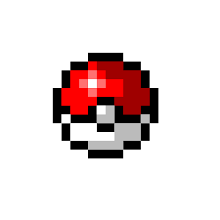"How I track pokemon using the "sightings" feature."

#PokemonGO: The most widespread approach to tracking pokemon is by finding the endpoints of a chord of a circle, bisecting it, and then walking perpendicular to it until the pokemon either is encountered, or disappears from the tracker (in which case you turn around).While this method is sound, I have found that it is impractical. First, it involves a lot of doubling back, and second, you might be required to walk somewhere you can't, e.g. through someone's yard or through a building.The method I use focuses instead on visualizing the search area, and whittling it away until the pokemon appears. It involves almost no doubling back through areas you've ruled out, meaning you could happen upon the pokemon at nearly any time, and, on average, less total expected walking than the chord method.The procedure:Step 1: define the search area.It's important to be able to visualize 200 m on your screen for this procedure. For me, it is 75% of the way up my screen when the screen is fully zoomed out, but this depends on your phone's aspect ratio. Use this utility to see what 200 m looks like at your location and compare to your game display.If a mon is on your tracker, it is within 200 m of you, and outside of 35 m of you (I actually think the encounter radius is bigger than this, but this is the most pessimistic figure that I commonly see, so I will use it.) Thus the first approximation of the search area looks like this.However, assuming you are walking when the mon appears, there are two possibilities for why it appeared. 1. it just spawned, in which case it could be anywhere within that disc. 2. you walked into its sighting radius, in which case, it is not behind you, and the search area looks a little different. Call this the initial arch.*It is safest to assume that case 2 is right, not only because it is more likely, but also, if the pokemon did just spawn directly behind you, it has a full clock and you aren't at risk of running out of time. Assume the pokemon is within the case 2 arch. Call your position "position 1".Before you head to position 2, memorize the spot that is 200m to your right. That is position 3b. There's a chance you will need it.Step 2: Start moving to position 2, 200m in the same direction you were walking.Position 2Beyond that point, the pokemon will vanish from the list, assuming it hadn't already. Up to that point, did the pokemon stay on the that whole time? If so, go to 3a. If it disappeared somewhere along the way, go to 3b.Step 3a: The mon is visible from position 2.If the mon is visible from position 2, it is in one of these two triangloid areasTurn around to face position 1. Now, rotate your screen so it's looking 60 degrees to the left (or to the right) of the position 1 - position 2 line. You can estimate 60 degrees by watching your compass turn. A little error here is okay. Remember, it's 2/3 of a right angle.Position 3a is 200m away along that bearing.Position 3aStart heading to position 3a. If you get there, and the pokemon stayed on the tracker the whole time, Sweep out the remaining area. If at any point along the way the pokemon disappears from the tracker, don't continue to position 3a. Go straight to the remaining area and sweep it out. The sooner the mon disappeared during step 3a, the closer to the far corner of this area it will be.Step 3b: The mon disappeared at some point before you got to position 2.Do not continue to position 2. instead, start heading straight for position 3b, the spot you made a mental note of.Position 3bIf you get there, and the pokemon stayed on the tracker the whole time, sweep out the remaining area. If at any point along the way to position 3b the pokemon disappears from the tracker or better yet, the pokemon never reappeared, don't continue to position 3b. Go straight to the remaining area and sweep it out. Again, that looks like a huge area to sweep out, but remember, the sooner the pokemon disappeared between positions 1 and 2, the further it must be toward the tip of the initial arch. Also, the sooner the pokemon disappeared during step 3b, the further away from the center (position 1) it is.Step 6: The pokemon was never encountered, but hasn't disappeared from the tracker.Looks like it may have spawned behind you.Overall, I find this method more effective than the chord method at nabbing pokemon before they despawn, because it doesn't involve walking through areas that you have already ruled out. You are almost always moving into space where the pokemon could be and could run in to it at any time. Also, because it is position based, and not trajectory based, it is more flexible and accommodating of obstacles. Also, on average, the total distance you will walk with this method is less than the average distance you will walk with the chord method, meaning it takes less time, and the mon is less likely to despawn.*initial search area in case 2 defined by the intersection of the disc and all possible 200 m circles that you could enter walking in that direction, and the subtraction of the 70m swath that you walked out. via /r/TheSilphRoad http://ift.tt/2bOQ1Zg
"How I track pokemon using the "sightings" feature."
!["How I track pokemon using the "sightings" feature."]() Reviewed by The Pokémonger
on
09:10
Rating:
Reviewed by The Pokémonger
on
09:10
Rating:


No comments